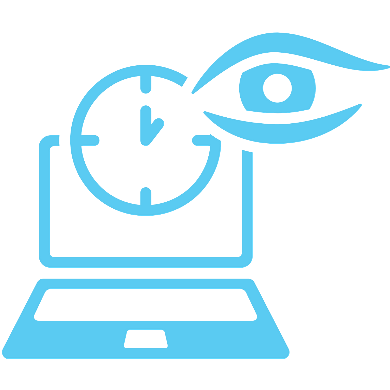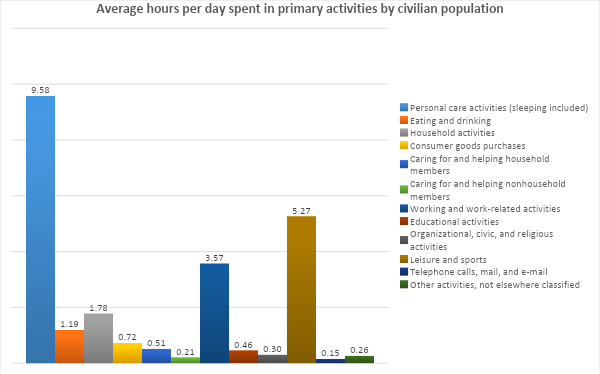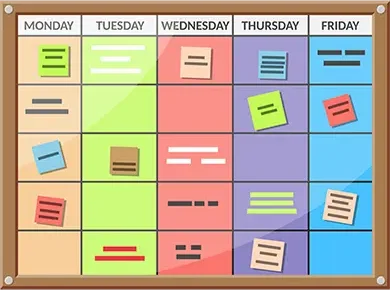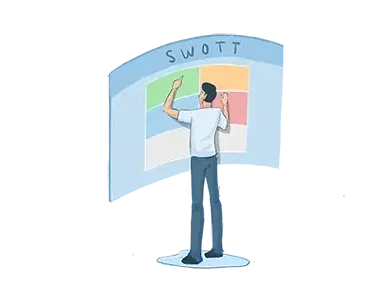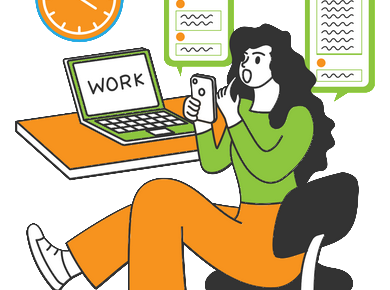A time tracking software is definitely something helpful when we need to find out what our time management flaws are and how we can better organize ourselves to be more productive and efficient in our everyday lives. One of the reasons is the fact that time seems to stand still when we do not like what we do, and instead, time seems to fly when we are interested or passionate about what we are doing.
Consequently, we tend to under-evaluate or over-evaluate the hours spent in our activities depending on their importance or depending on whether we are pleased or not to perform a certain activity. Moreover, most of the time we tend to just ignore the time spent on certain activities. This happens because that activity is something that became such a routine that we don’t even think about it. We simply do it and we are not aware of the time that goes by meanwhile.
Usually in our everyday life, in addition to the main job, we have many other daily activities like household or leisure activities that naturally, are also time-consuming. The problem is that sometimes we are also unaware of the amount of time spent on some of those activities. We simply overlook them because they are something that we usually do or just because it seems small and unimportant.
Reasons to use time tracking software in our personal life
Even the activities that we consider to be small and unimportant or just plain routine are time-consuming. There is no way that time will stop just because we are doing something in “no time”.
Source: Bureau of Labor Statistics, (2019, June 19), American Time Use Survey, bls.gov Retrieved Nov 1, 2019 from https://www.bls.gov/tus/
For example, we spend eating and drinking an average of 1.19 hours per day. But there are some other activities that we do so that we can eat and drink and we usually forget to consider them.
In this case, we should think about adding an average of 0.46 hours per day for food and drink preparation and an average of 0.12 hours per day for Kitchen and food cleanup. Or, if we are talking about eating out, then we should also consider the travel time related to eating and drinking, which is an average of 0.11 hours per day. Therefore the average 1.19 hours per day can actually become 1.77 in case of eating at home or 1.30 if we are talking about eating out.
The difference contributes to what will make us at the end of the day to think that there are not enough hours in a day for everything we have to do.
We could avoid this problem if we use time tracking software to record each activity quickly and easily so that we know exactly the real time spent on everything.
The same happens with leisure and sports activities like socializing and communicating, watching television or participating in sports or other recreational activities. We spend an average of 5.27 hours per day on those. But, how about the additional activities carried out so that we enjoy ourselves in our free time? If we think about it turns out that we should also add an average of 0.06 hours per day for walking from an activity to another, maybe also an average of 0.19 hours per day for travel related to leisure and sports, perhaps some time spent on phone calls or messages.
Consequently, it is not only 5.27, in reality, but we are also spending approximately 5. 55 hours per day with leisure and sports activities.
When we have all the activities registered in a time tracking software, then we can analyze them and in the future, we can better evaluate the time periods required for what we have to do. This way we’ll have the opportunity to program everything more accurately and avoid singing like Louis Armstrong “There’s so little time and so much to do. There’s so little time for dreams to come true”
Reasons to use time tracking software in our professional life
In terms of our professional life underestimating or overestimating the time needed is also happening. There are some tasks performed during the working hours that we like more than others, there are also some of those that already became such a routine that we don’t think about them as time-consuming tasks. All these influences the way we perceive the passage of time.
Most of the time we don’t realize that while we approximate to spend an average of 7.61 hours working, in fact, we’ll spend more than that if we also take into account some other work-related activities or the time spent traveling to get to work.
| Time spent in primary activities | Average hours per day for persons who engaged in the activity |
|---|---|
| Working and work-related activities | 8.09 |
| – Working | 7.61 |
For the persons who engaged in the activity, the travel related to work is estimated to an average of 0.8 hours daily and there is also an average of 2.01 hours per day for other work-related activities. These numbers are not at all unimportant.
If we sum them with the 7.61 hours of work, then the average hours of daily professional time will change and this will interfere with our personal time. The extra time spent working and of which sometimes we are not even aware, will shorten the time we initially allocated for family, friends, leisure or sports.
Therefore, using time tracking software sounds like the perfect solution. We’ll avoid these errors of underestimating or overestimating the time necessary for certain activities or tasks, and we’ll be able to better organize ourselves and to be more productive and efficient in both our professional and personal life. No more “There is not enough time in the day”
A time tracking software keep some tasks from “stealing our time”
Which are some of the activities that most of the time we will carry out without being aware of the time that passes while we perform them, that unless we use time tracking software?
- Emails
If we consider 2.6 hours per day spent on emails, we realize that the untracked time spent on emails can cause us quite a lot of confusion in terms of planning and organization. The more so as there is a survey showing that 35.8 % of the respondents never track the time spent on reading or answering emails.
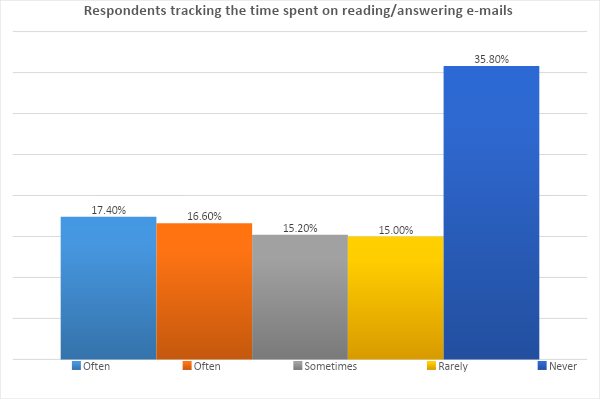
Source: Accelo, Time is money, Retrieved Nov 1, 2019 from https://www.accelo.com/assets/Uploads/WhitePaperTimeIsMoney.pdf
Meetings
It seems that 20.6% of the survey respondents do not track the time spent in meetings. So, they do not know the real amount of time consumed. Not to mention the fact that not all meetings are efficient or have the planned outcome. Therefore some meetings are real time-stealers.
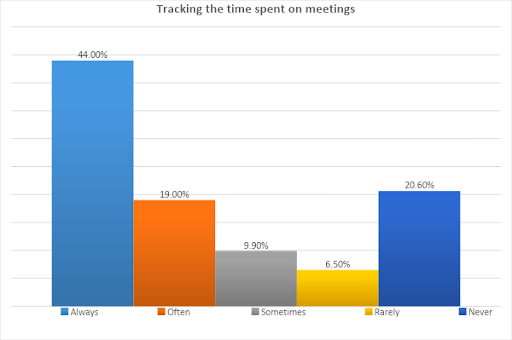
Source: Accelo, Time is money, Retrieved Nov 1, 2019 from https://www.accelo.com/assets/Uploads/WhitePaperTimeIsMoney.pdf
- Repeated interruptions
Usually, it takes us around 10 minutes to switch between tasks and we need about 15 minutes to be able to work focused after that. If this happens a few times during our working hours is neither efficient nor productive because we’ll sum up an important amount of wasted time. As a complication of these repeated interruptions or changes between tasks, forgetting may occur. We may get on with some other things and forget about certain tasks.
On a time tracking software, you can see clearly how much time is consuming each task
These time stealers can be kept under control by using PlanArty – time tracking software. By using one, we’ll:
- always be on top of the time spent on each activity
- better approximate the time required when making our scheduling
- know at a glance the situation of our billable hours
- always have prepared, complete and detailed reports for our clients
Using PlanArty – time management solution on both our personal and professional activities will help us work smarter not harder and visibly increase our efficiency and productivity, also deliver increased quality and have better cost-efficiency.
